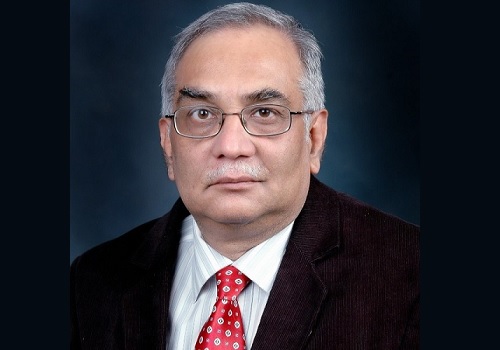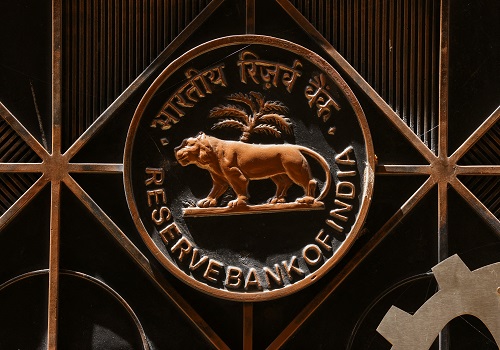2024-06-08 02:25:58 pm | Source: PGIM India Mutual Fund

RBI Monetary Policy Note by Puneet Pal, Head - Fixed Income, PGIM India MF

Below the RBI Monetary Policy Note by Puneet Pal, Head - Fixed Income, PGIM India MF
In our view, this policy is a step towards monetary easing and though RBI’s tone is still one of caution, the MPC statement acknowledged that the disinflation achieved so far has not hurt growth and dropped the line on unwavering focus on price stability in its statement. In our view, RBI will await the onset and progress of monsoons and given the fact that two of the three external members are now voting for a rate cut as well as a change in stance to “Neutral”, it will put pressure on rest of the MPC if monsoons are good and food Inflation eases. Developed market central banks have started their easing cycle with both Bank of Canada and ECB cutting rates. Bank of England is expected to follow suit. Incremental economic data in US is softening and if this trend continues, we can see some easing from the US Fed before the year end.
We believe that rate cuts in India will start from Q3/Q4 FY2025 onwards as real rates gives room to RBI to cut rates. The possibility of monetary easing coupled with the fact that Bond Inclusion flows will start coming in from this month and the fact the there is a fair probability of India’s sovereign rating getting upgrade over the next couple of years places Indian Bonds in a sweet spot. The final Budget expected to be presented next month will lay the roadmap for future fiscal consolidation and if it stays the course then we expect bond yields to start trending lower gradually given the favourable demand/supply dynamics. We believe that current yields offer an attractive risk- reward to investors and they can start increasing their allocation to fixed income, especially at the longer end of the curve as we expect the curve to remain flat.
Investors with medium to long term investment horizon can look at funds having duration of 6-7yrs with predominant sovereign holdings as they offer a better risk-reward currently. Investors having an investment horizon of 6-12 months can consider Money Market Funds as yields are attractive in the 1yr segment of the curve. We expect the benchmark 10yr Bond yield to gradually drift lower towards 6.50% by Q3/ Q4 FY2025.
Market Reaction:
In the run up to the policy, Bond yields were more influenced by general election results and bond markets were expecting a status quo in monetary policy. The benchmark 10yr bond yield had gone below 7% in response to an upgrade in India’s sovereign rating outlook to “Positive” from “Stable” by S&P and also the fact that the higher dividend declared by RBI gives fiscal flexibility to the government. Bond yields were stable after the policy. The benchmark 10yr bond yield ended the day at 7.02%, almost flat from pre-policy levels.
We believe that rate cuts in India will start from Q3/Q4 FY2025 onwards as real rates gives room to RBI to cut rates. The possibility of monetary easing coupled with the fact that Bond Inclusion flows will start coming in from this month and the fact the there is a fair probability of India’s sovereign rating getting upgrade over the next couple of years places Indian Bonds in a sweet spot. The final Budget expected to be presented next month will lay the roadmap for future fiscal consolidation and if it stays the course then we expect bond yields to start trending lower gradually given the favourable demand/supply dynamics. We believe that current yields offer an attractive risk- reward to investors and they can start increasing their allocation to fixed income, especially at the longer end of the curve as we expect the curve to remain flat.
Investors with medium to long term investment horizon can look at funds having duration of 6-7yrs with predominant sovereign holdings as they offer a better risk-reward currently. Investors having an investment horizon of 6-12 months can consider Money Market Funds as yields are attractive in the 1yr segment of the curve. We expect the benchmark 10yr Bond yield to gradually drift lower towards 6.50% by Q3/ Q4 FY2025.
In the run up to the policy, Bond yields were more influenced by general election results and bond markets were expecting a status quo in monetary policy. The benchmark 10yr bond yield had gone below 7% in response to an upgrade in India’s sovereign rating outlook to “Positive” from “Stable” by S&P and also the fact that the higher dividend declared by RBI gives fiscal flexibility to the government. Bond yields were stable after the policy. The benchmark 10yr bond yield ended the day at 7.02%, almost flat from pre-policy levels.
RBI Policy:
The MPC policy today was on expected lines. Status quo was maintained on policy rates and the monetary policy stance but the positive surprise came in the form of two external members of the MPC voting for a rate cut and the decision on policy rates and the monetary policy stance was taken with a 4-2 majority as Prof. Varma (like last meeting) and Dr Ashima Goyal voted for a rate cut along with the change in monetary policy stance to “Neutral”. The RBI Governor, in his statement, highlighted that the last mile of disinflation is challenging and that RBI was mindful of not only ensuring that inflation goes towards 4% but also sustains there on a durable basis. The undertone of the policy remains cautious but also gives rise to optimism that if monsoons are good and the concerns on food inflation alleviate then it may open room for monetary easing.
The central bank retained its inflation forecast for FY25 at 4.50% while increasing its growth forecast for FY25 to 7.20% from 7.00% earlier. It cited good growth momentum for the increase in its growth forecast. The MPC statement mentioned the continued stability in the global economy. The MPC statement also highlighted that the domestic growth-inflation balance has moved favourably since its last meeting in April 2024 and that economic activity remains resilient. The RBI Governor also highlighted that they will not be synchronising their monetary policy with the US Fed and that it will depend predominantly on domestic factors by stating, “I would like to unambiguously state that while we do keep a watch on whether clouds are building up or clearing out in the distant horizon, we play the game according to the local weather and pitch conditions. In other words, while we do consider the impact of monetary policy in advanced economies on Indian markets, our actions are primarily determined by domestic growth-inflation conditions and the outlook.”
In response to a question on the real neutral rates in the post policy press conference, RBI said that they will publish that in the RBI Bulletin. The assessment of the real neutral rate is important from monetary policy perspective as it can indicate the room available for monetary easing. Thus, we read today’s policy as a step closer to monetary easing as two of the external members in the MPC are now in favour of both a rate cut and a stance change and a drop in food inflation can open up room for easing later in the year even as RBI continues to strike a cautious undertone with continued emphasis on macro stability.
The central bank retained its inflation forecast for FY25 at 4.50% while increasing its growth forecast for FY25 to 7.20% from 7.00% earlier. It cited good growth momentum for the increase in its growth forecast. The MPC statement mentioned the continued stability in the global economy. The MPC statement also highlighted that the domestic growth-inflation balance has moved favourably since its last meeting in April 2024 and that economic activity remains resilient. The RBI Governor also highlighted that they will not be synchronising their monetary policy with the US Fed and that it will depend predominantly on domestic factors by stating, “I would like to unambiguously state that while we do keep a watch on whether clouds are building up or clearing out in the distant horizon, we play the game according to the local weather and pitch conditions. In other words, while we do consider the impact of monetary policy in advanced economies on Indian markets, our actions are primarily determined by domestic growth-inflation conditions and the outlook.”
In response to a question on the real neutral rates in the post policy press conference, RBI said that they will publish that in the RBI Bulletin. The assessment of the real neutral rate is important from monetary policy perspective as it can indicate the room available for monetary easing. Thus, we read today’s policy as a step closer to monetary easing as two of the external members in the MPC are now in favour of both a rate cut and a stance change and a drop in food inflation can open up room for easing later in the year even as RBI continues to strike a cautious undertone with continued emphasis on macro stability.
Above views are of the author and not of the website kindly read disclaimer
Disclaimer:
The content of this article is for informational purposes only and should not be considered financial or
investment advice. Investments in financial markets are subject to market risks, and past performance is
not indicative of future results. Readers are strongly advised to consult a licensed financial expert or
advisor for tailored advice before making any investment decisions. The data and information presented
in this article may not be accurate, comprehensive, or up-to-date. Readers should not rely solely on the
content of this article for any current or future financial references.
To Read Complete Disclaimer Click Here
Latest News

Richer Than Money: Why Social Capital Is Becoming th...

VentureSoul Partners closes maiden debt fund at Rs.3...

Quote on FII flows 29thNovember 2025 from Dr. VK Vij...

Quote on India`s GDP Growth in Q2 by Kunal Gala, Par...

Smart Glasses With Hidden Camera: A Closer Look at a...

New drug to bypass resistance in deadly childhood ca...

Walking to School: A Simple Routine That Shapes Stro...

Nature-Inspired Couture That Blends Art and Elegance

Industry hails initiative to modernise semiconductor...

Will RBI slash repo rate amid robust GDP growth, all...
More News

Quote on RBI MPC by Suvodeep Rakshit, Chief Economist, Kotak Institutional Equities

Perspective on RBI MPC Data by Ms. Madhavi Arora, Chief Economist, Emkay Global Financial Services

Quote on the recent US decision to impose a steep 50% tariff on all Indian exports by Dr. Manoranjan Sharma, Chief Economist at...

Reaction on RBI MPC announcement by Shri. Binod Kumar, MD & CEO of Indian Bank









